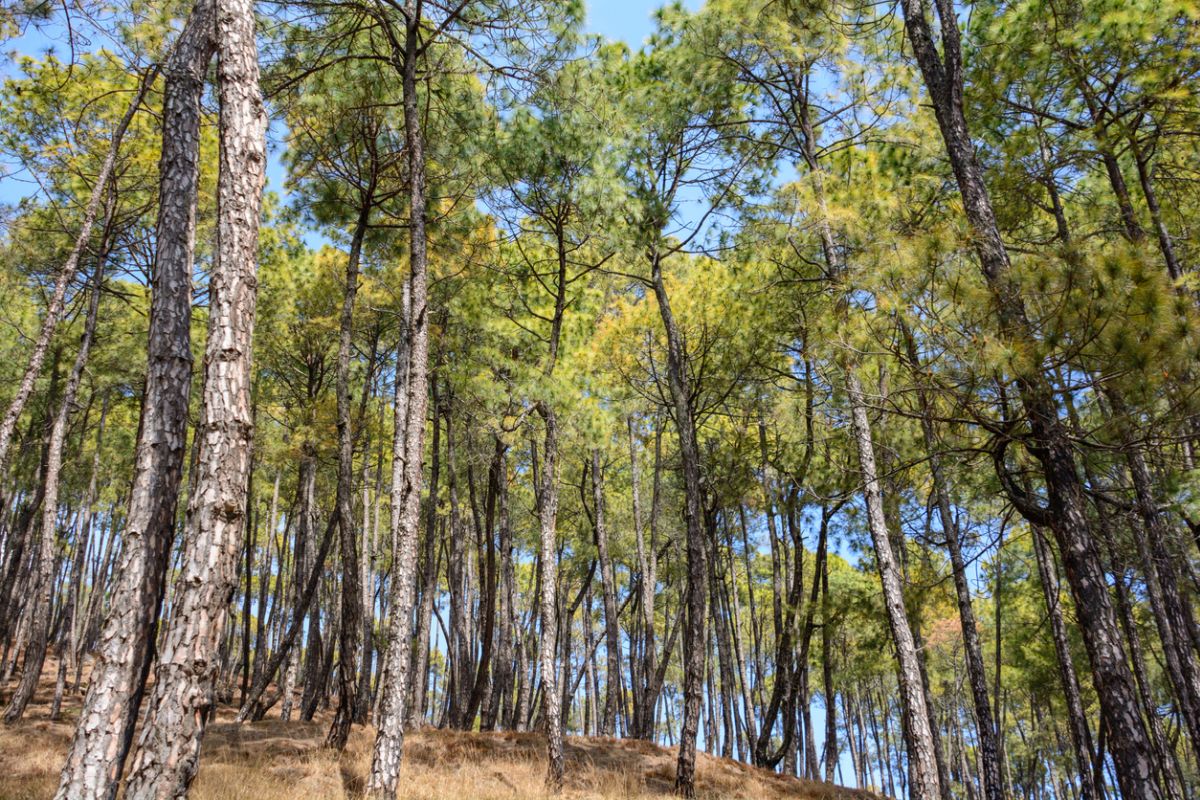Hill-plain controversy in Uttarakhand sparks political storm, draws in UP CM
Without directly naming Yogi Adityanath, Kumar pointed out that the UP CM hails from a hill region.
According to a government estimate, 3,99,329 hectares of the total forest area is covered by chir pine trees, so pine needles are found in abundance in the state.

(Photo: Getty Images)
The Uttarakhand government has begun efforts to produce green power from the leaves of pine trees – known as pine needles – in a bid to reduce their quantity in the jungles as they catch fire very quickly.
For the past few years, forest fires have been creating havoc in the jungles of Uttarakhand, razing several hectares of land and even killing people and animals. Scientists say the main culprit behind the spread of such fires is pine needles – locally known as pirul – which catch fire quickly.
Advertisement
According to a government estimate, 3,99,329 hectares of the total forest area is covered by chir pine trees, so pine needles are found in abundance in the state.
Advertisement
As part of the move, the government has issued letters of award to 21 companies which would set up new power plants to generate electricity under the state’s policy of power generation through pirul. These companies would produce a total of 675 KW power.
The Uttarakhand Power Corporation Limited (UPCL), the sole government-owned power distribution company in the state, would sign separate power purchase agreements (PPAs) with these companies to buy power at Rs 7.54 per unit, said Chander Singh Bisht whose company – Bhagirathi Chidh Vidyut Producer – is setting up the biggest pirul plant in Dunda block of Uttarkashi district with a capacity of 125 KW.
Chief Minister Trivendra Singh Rawat is taking keen interest in power generation through pirul and believes that pine needles have the potential to generate revenue and create employment opportunities in the hills which are badly hit by widespread migration.
“Pirul can generate power which in turn can generate employment opportunities,” he said.
Under this policy, the government has set a target to generate 1 MW by 2019, 5 MW by 2021 and 100 MW by 2030, said state Power Secretary Radhika Jha.
Meanwhile, the government will pay Rs 1 per kg to those who collect and supply pirul from the jungles.
Already, Haryana-born Rajnish Jain has set up a small plant to generate power from pirul in the Berinag area of Pithoragarh district. This is considered to be the first such plant in the hill state.
Advertisement